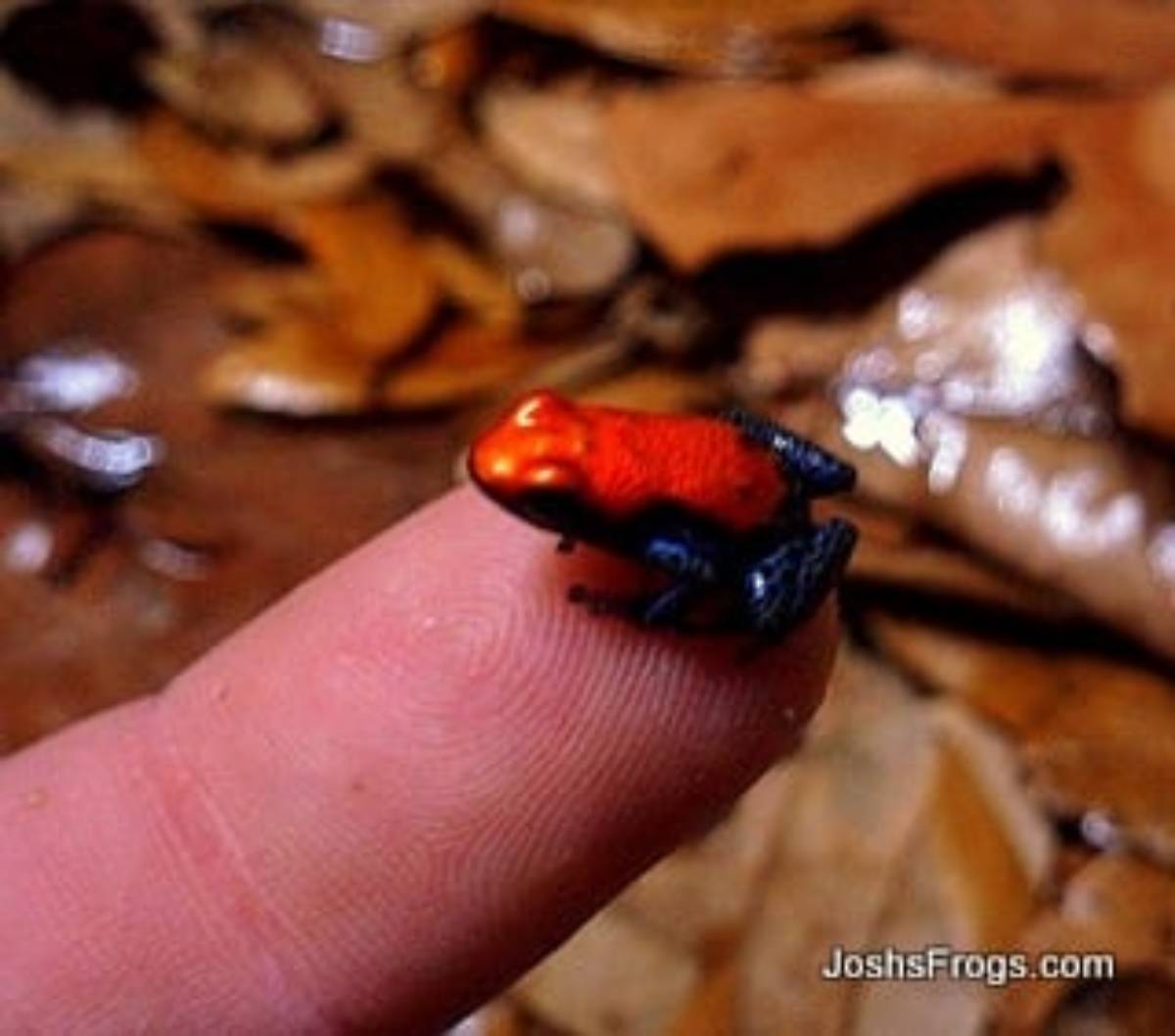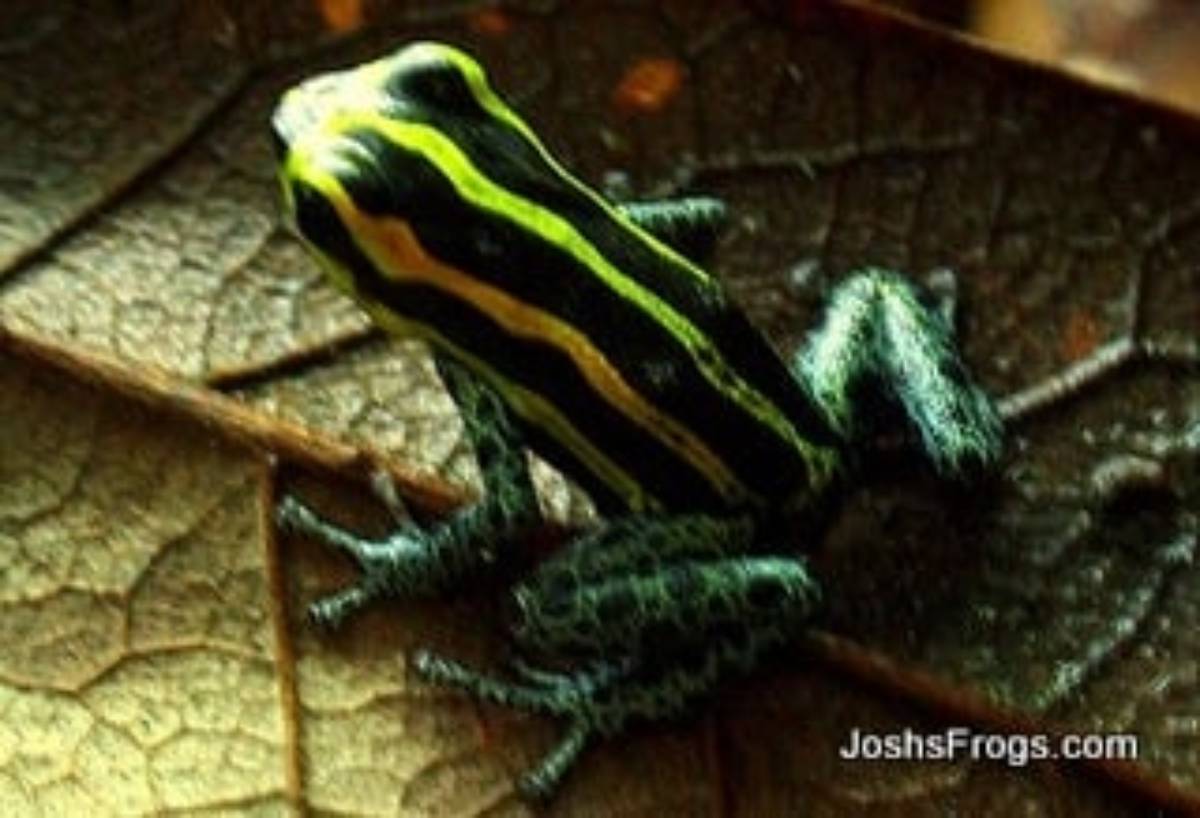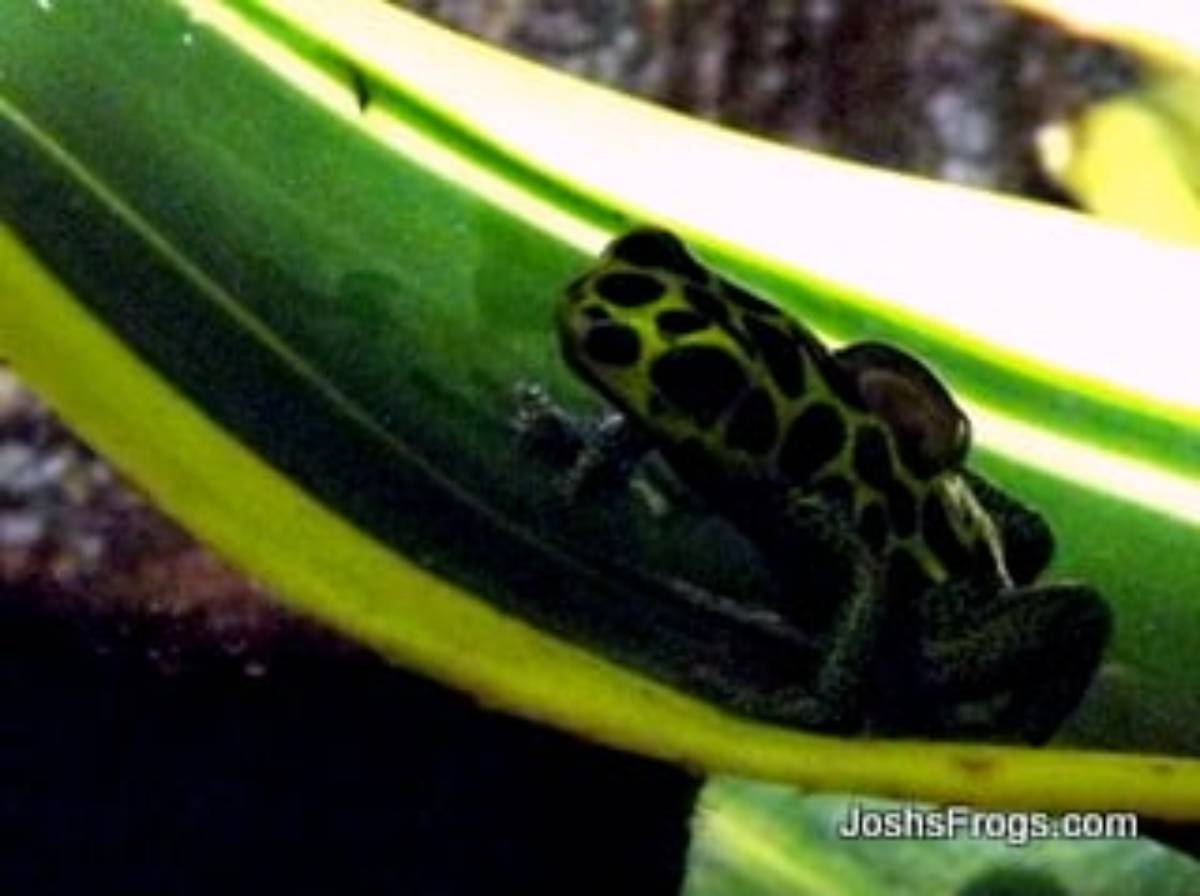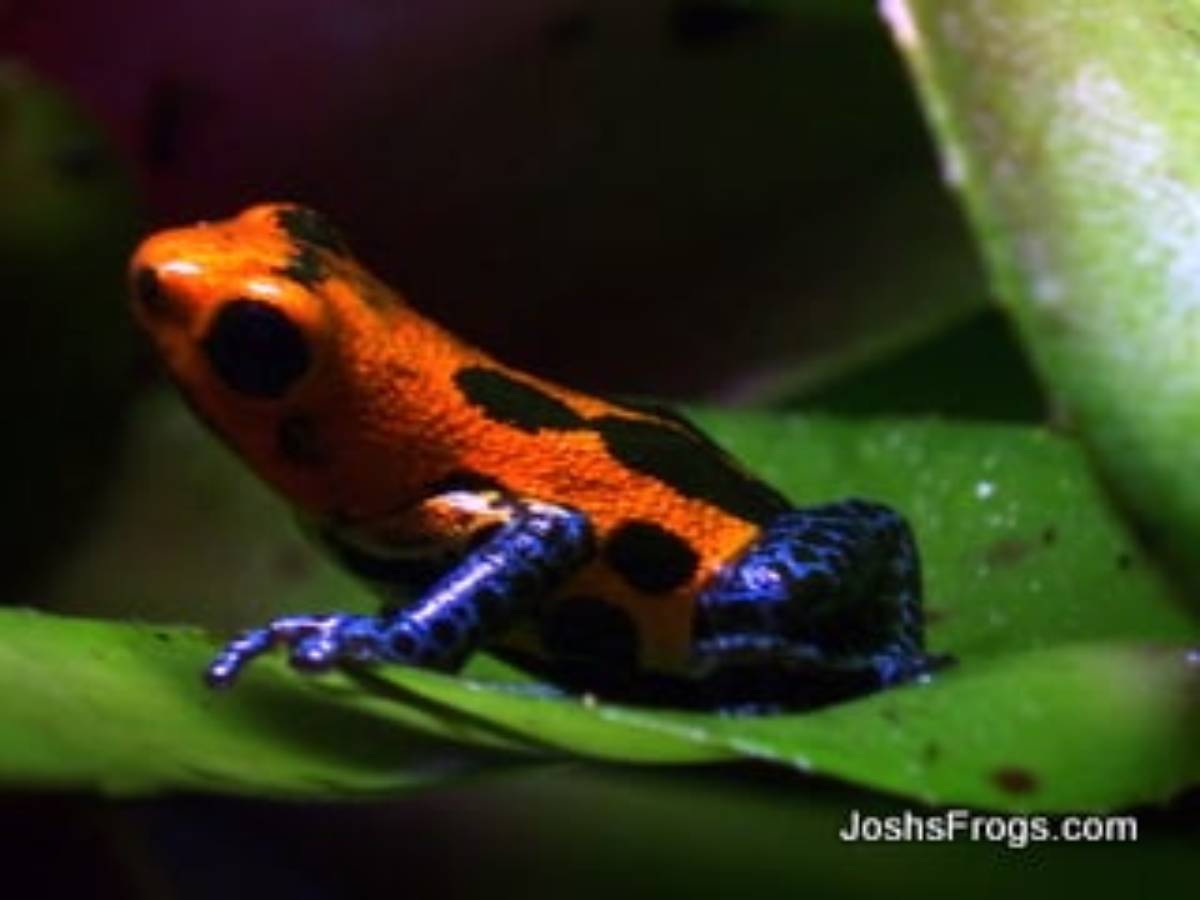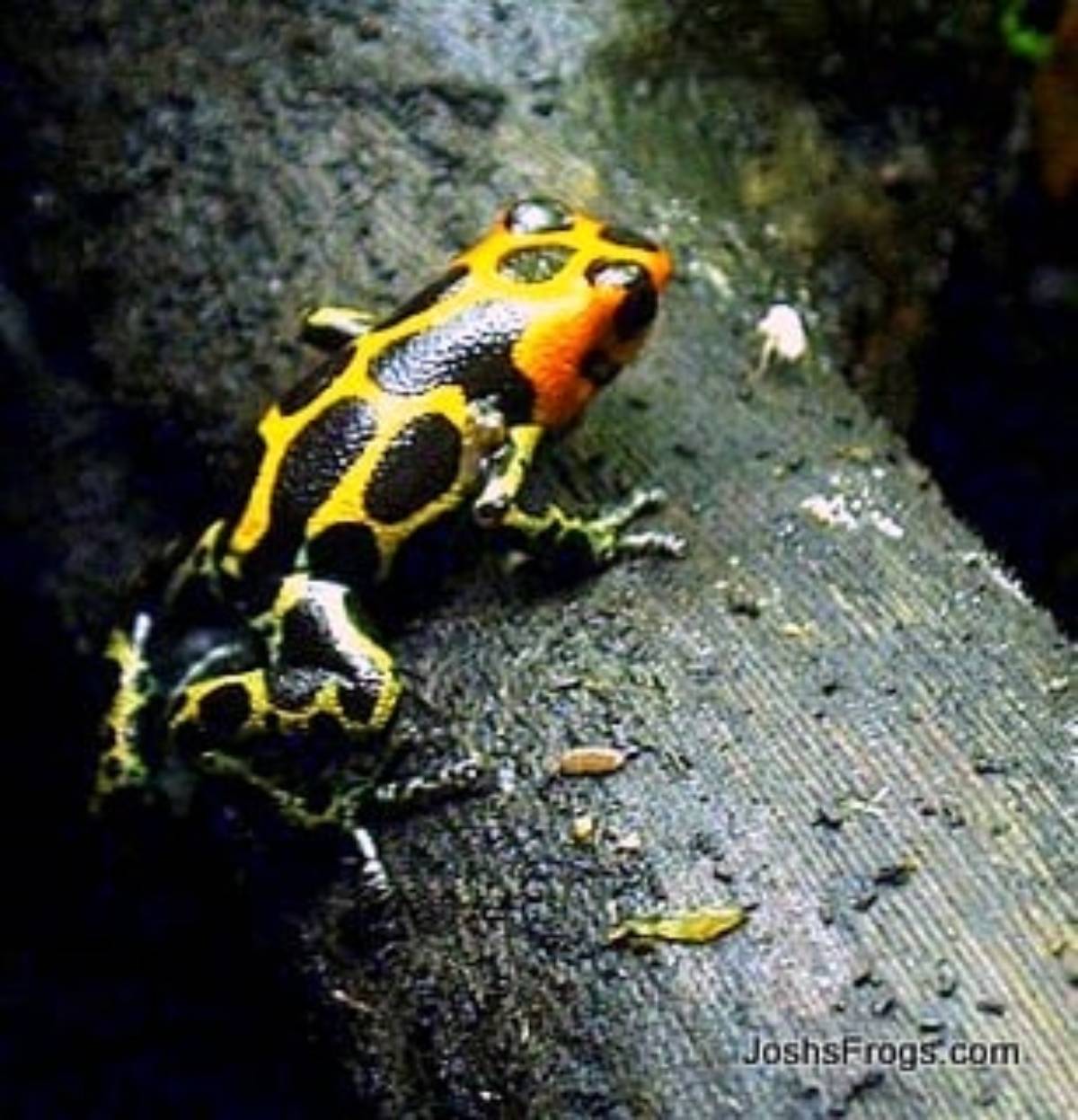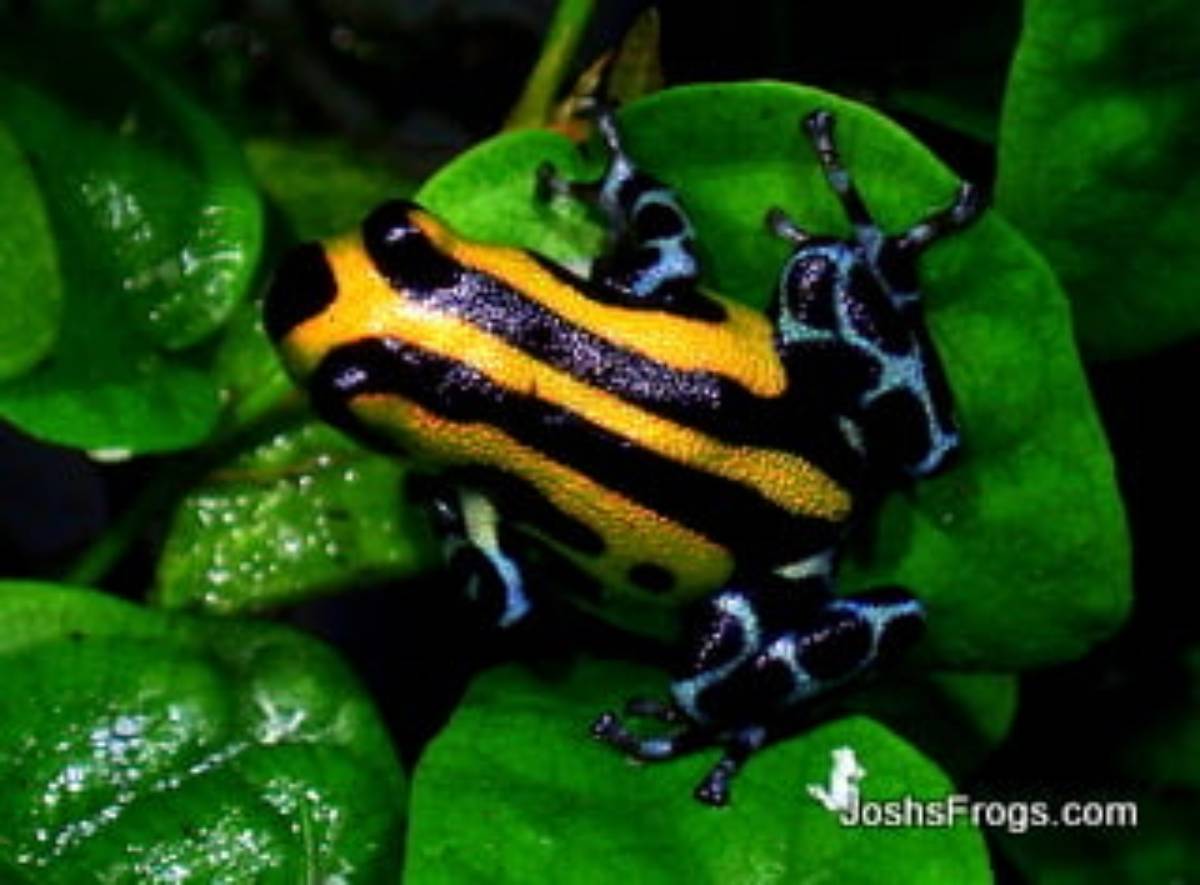Josh's Frogs
Three Thumbs Up
Ranitomeya imitator, R. ventrimaculata, and R. lamasi
Frogs of the genus Ranitomeya, or Thumbnail Dart Frogs, have always had a special place in the dart frog hobby. Their small size, quick movements, sometimes elusive behavior, and fascinating breeding habits quickly make them the favorites of a collection. This blog article will provide an overview of the three most common species in the trade.
Ranitomeya sp.dart frogs are also known as 'Thumbnail Dart Frogs', due to their small size. Pictured is Ranitomeya reticulata.
Ranitomeya imitator (also known as Dendrobates imitator) is a small, variable frog from northern Peru. Their common name is the Mimic Poison Dart frog, reflecting the frog's tendency to mimic other species' color and pattern. Various forms occur in the US hobby, including R. imitator 'nominat/standard', R. imitator 'Intermedius', R. imitator 'Varadero', and R. imitator 'Tarapoto', with each morph representing a specific population. Like all thumbnail dart frogs, these frogs are approximately ¾ of an inch. They have a moderately loud, buzzing call.
Ranitomeya imitator 'Yurimaguensis'
Like the rest of the Ranitomeya species discussed here, Imitators are non-obligate egg feeders, and show interesting parental behavior. Imitators will lay 1-5 white eggs (typically 3) at a time, after going through the typical Dendrobatid courtship rituals. Eggs are often laid on a flat leaf, or inside a film canister. The male will guard them, routinely wetting the eggs to avoid desication. After the eggs hatch, tadpoles are scooped up the frog's back, and transported to individual bodies of water (typically film canisters or bromeliads in vivaria). Ever so often, the female will deposit infertilized eggs into the water to feed the tadpoles, until they emerge from the water as minature versions of the adults. Being Non-obligate egg feeders, the tadpoles can be raised artificially, if you choose to remove eggs or tads to raise.
All species of thumbnail dart frogs will transport tadpoles. Pictured is Ranitomeya imitator 'Nominat/Standard'.
Ranitomeya imitator 'Varadero'
Ranitomeya imitator is fairly bold most of the time, especially when breeding. In smaller vivaria (such as a 12x12x18 Exo Terra Glass Terrarium), they are best housed in pairs. In larger vivaria (such as an 18x18x24 Exo Terra Glass Terrarium), they can be kept in groups – keep a close eye on the frogs, as they can stress each other. Ample leaf litter should be provided to the inhabitants, which will foster healthy microfauna growth – being smaller frogs, imitators love springtails and Drosophila melanogaster fruit flies. These small frogs appreciate temperatures in the low to mid 70s F, with a temperature drop of up to 10F at night.
Ranitomya imitator 'Intermedius' enjoying a fruit fly.
Ranitomeya ventrimaculata (also known as Dendrobates ventrimaculatus, and R. amazonica) is another common thumbnail frog in the US hobby. In the wild, they are found throughout Amazonia (French Guiana, Brazil, Ecuador, and Peru), and display a wide variety of colors (most retain the typical striped pattern). Common forms in the hobby include R. ventrimaculata 'French Guiana', R. ventrimaculata 'amazonica', and R. ventrimaculata 'Iquitos'.
Ranitomeya ventrimaculata 'Amazonicus'
Vents share the typical Ranitomeya breeding behaviors with R. imitator, with a few important differences. Ranitomeya ventrimaculata is a much more prolific breeder, with a single female sometimes laying 7-9 eggs at a time. These frogs are also great group breeders, with multiple males and females congregating and breeding together, sometimes resulting to globs of 15 or more eggs, which are typically laid underwater in bromeliads or film canisters. Vents can be very, very prolific breeders, even if left to their own devices. I once housed a pair in a 12x12x18 Exo Terra Glass Terrarium. After a year, I tore the vivarium apart, only to discover 9 adult frogs!
Ranitomeya ventrimaculata 'French Guiana'
Housing and feeding is virtually identical to Ranitomeya imitator. Vents will appreciate lots of leaf litter to sort through, and the extra springtails it provides. Unlike Imitators, vents tend to be very shy frogs for the most part.
Ranitomeya lamasi (also known as Dendrobates lamasi, and probably several other names the way taxonomists have been working lately) is native to Peru, where it utilizes phytotelmata (plants that hold water), such as heliconias, bromeliads, and even bamboo. All lamasi tend to have a striped pattern and a solid colored square on their belly, but their base color can vary drastically depending on population (generally, black and yellow/orange/green). Size can vary as well, with the larger forms occurring at a higher elevation. Forms present in the US include Ranitomeya lamasi 'Standard/Highland', R. lamasi 'orange/orange panguana', R. lamasi 'panguana', and R. lamasi 'green leg'.
Ranitomeya lamasi 'Highland/Standard' is a larger form of lamasi that occurs at higher elevations.
R. lamasi shares breeding habits with other members of it's genus. These very secretive frogs lay 1-3 eggs at a time, which are then raised in the typical thumbnail fashion. In the vivarium, lamasi seem to prefer black film canisters, and sometimes even lay in the leaf litter. Some forms, such as the 'Standard/Highland' form, are very difficult to breed, and in serious danger of disappearing from the hobby.
Ranitomeya lamasi 'Standard/Highland' is much more difficult to breed than other
thumbnail dart frogs, making it very sought after.
Care of Ranitomeya lamasi is nearly identical to other thumbnail frogs, with a few exceptions. In my experience, lamasi seem to appreciate a little more floor space and plant cover than other thumbnails. Eggs seem to be slightly more sensitive than other thumbnails – it may be wise to let the parent frogs tend to the eggs and transport the tadpoles, then remove the tads to raise artificially.
Conclusion
Thumbnail dart frogs, so named for their diminutive size, will always attract attention for their diversity, breeding behaviors, and small stature. There is an ever growing segment of the hobby that focuses specifically on the frogs of the genus Ranitomeya, and rightly so – these frogs will quickly earn a special spot in any home collection.

